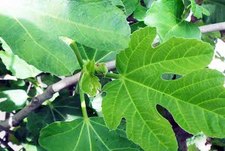TREE MAINTENANCE

Whether your tree is old or new, landscape trees need proper care and maintenance to grow and be their best. Trees add value to any landscape yet their maintenance will further enhance their beauty. Beyond adding aesthetics to your property, trees help the environment by producing oxygen, reducing pollution, and cutting down on utility bills by creating shade.
Trees are a landscape asset beyond compare, however, they can equally cause problems if not properly cared for and maintained. Further, they can end up costing you money by damaging your home and detracting from its curb appeal. The key to the former is to have regular, routine tree care to ensure your trees stay an asset vs become a liability.
There are a number of essential tree care maintenance tasks that every property owner should perform on their own or hire a professional in the Birmingham, AL area.
Trees are a landscape asset beyond compare, however, they can equally cause problems if not properly cared for and maintained. Further, they can end up costing you money by damaging your home and detracting from its curb appeal. The key to the former is to have regular, routine tree care to ensure your trees stay an asset vs become a liability.
There are a number of essential tree care maintenance tasks that every property owner should perform on their own or hire a professional in the Birmingham, AL area.
Regular Tree Care Maintenance
Routine tree care means a variety of maintenance activities. From tree pruning to seasonal fertilizing, having your trees cared for by a skilled arborist can improve their beauty and overall health. It also helps you stay safe from dangerous tree work. The average cost of tree maintenance is $400, with most probably owners spending between $250 to $700 annually.
Soil Testing
Trees are very sensitive to soil conditions, especially soil composition and acidity. If you see that your trees are not looking their best, the soil may be the reason. Soli testing typically costs a few hundred dollars but can make all the difference between unhealthy looking trees and beautiful ones.
Tree Trimming
Trees require haircuts just like people do. Most landscape trees, with the ability to grow in all directions (vs. forest trees, which can only grow up due to the need to compete for sunlight), need regular trimming. Tree trimming can be performed by property owners on smaller trees where their feet can stay safely planted on the ground; however, trimming larger trees almost always professionals due to the need to climb and lower large, heavy limbs safely to the ground. Trimming is required on a regular basis for a number of reasons: to thin the canopy to allow sunlight and air to penetrate; to remove dead or dying branches; to eliminate growth that is near property structures, such as roofs and power lines; and to promote healthy and beautiful growth.
Watering
For newly planted trees, watering is critically important. The rule of thumbs is ten gallons of water per inch of tree diameter. However, as the tree grows and matures, trees need less watering as their roots can access moisture at much deeper soil levels. Larger, more mature trees rarely needed supplement watering, however in extreme drought conditions, when you see leave wilting and falling premature, a good dose of water could help it survive the dry period.
Mulching
Mulch plays a more critical role in keeping trees healthy than just merely being a landscaping accent. Mulch provides the soil covering tree roots with insulation from prematurely drying out. Further, mulch also helps lower temperatures and retains moisture. All newly planted for transplanted trees should be mulch. For larger, more mature trees mulch is optional and typically used only for landscaping appeal.
Trees can be tremendous assets to both your landscaping and the overall planet. However, they need to be cared for in order to fulfill these purposes. When properly cared for, your trees can provide a lifetime of enjoyment and beauty.
